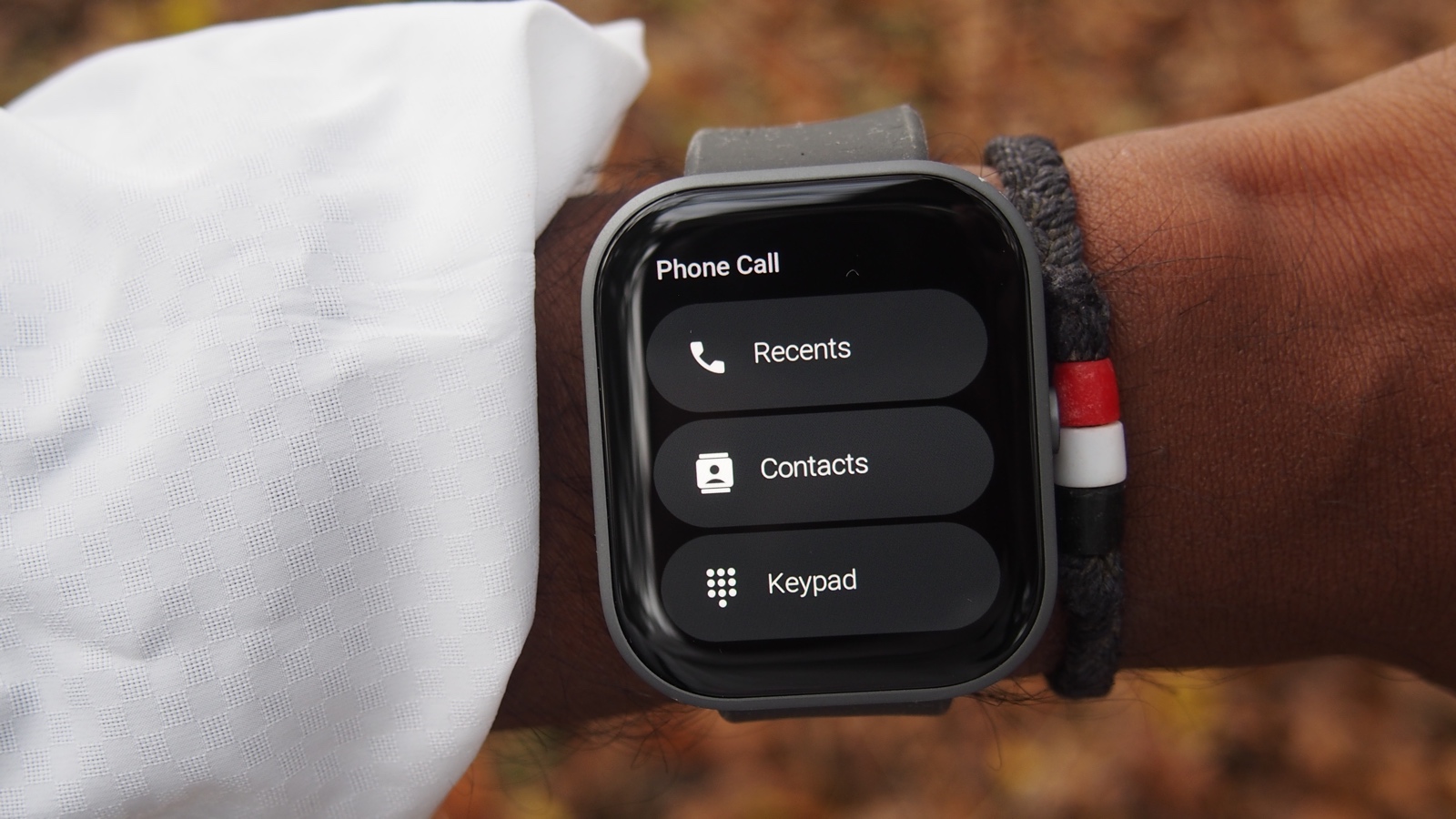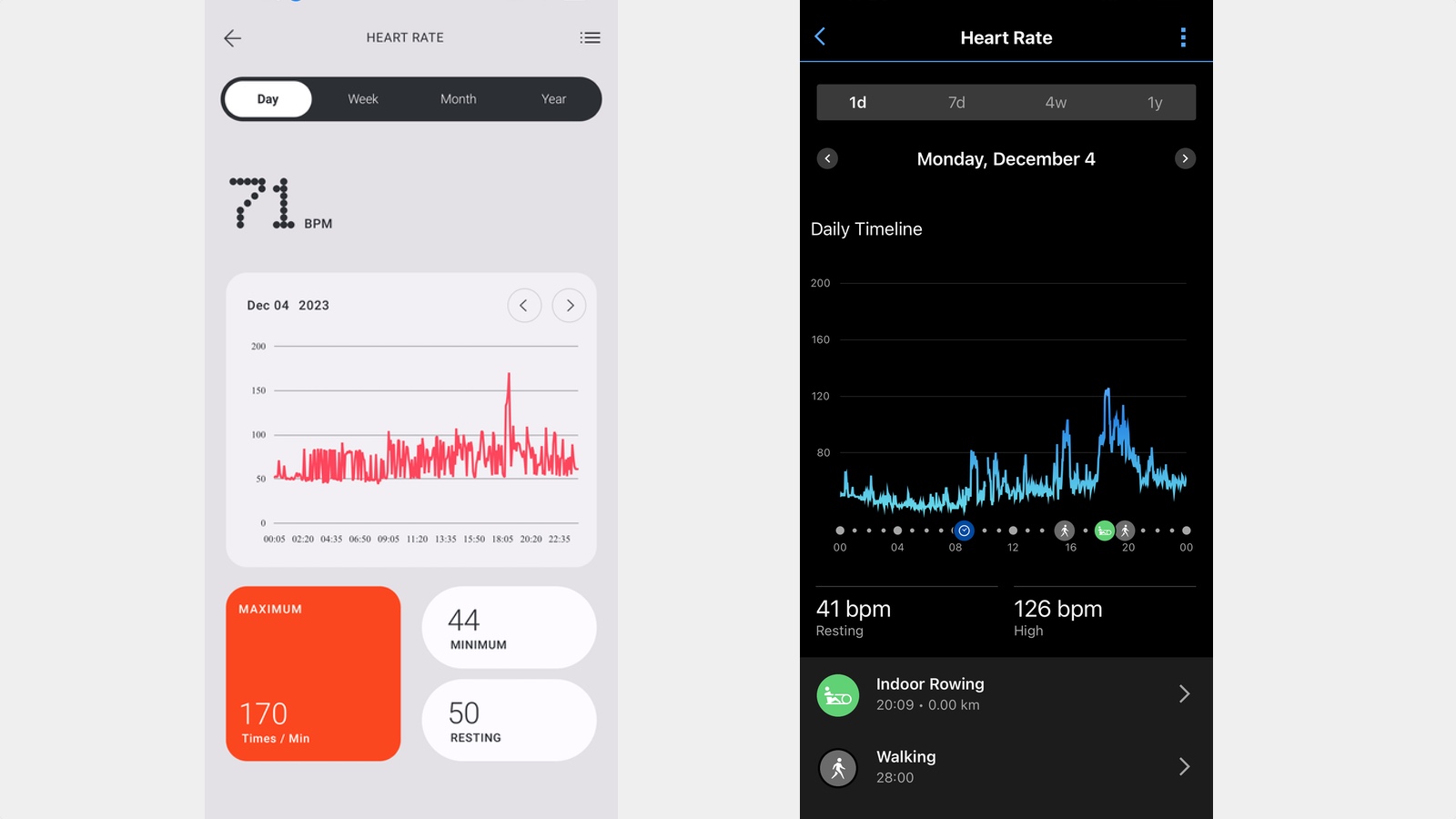
- Great design, build and screen quality
- Clean user interface
- Okay performance and features for the price
- There are some bugs
- You can't swim or shower with it
- Hit and miss fitness accuracy
squirrel_12997144
Nothing has made waves in the earbud and smartphone world – and now it's taking on budget smartwatches with the CMF Watch Pro.
CMF, which is a sub-brand of Nothing, has chosen not to go toe-to-toe with smartwatches like the Apple Watch and the Samsung Galaxy Watch – and instead target the increasingly crowded budget smartwatch market.
The Watch Pro, is another square smartwatch that offers a mix of traditional smarts like notification support, music controls, and fitness ones like heart rate tracking and GPS. Does the CMF Watch Pro shake things up?
Here's our comprehensive take.
> Best cheap smartwatches – reviewed
Price and competition
The CMF Watch Pro costs $69/£69 putting it up against fellow budget smartwatches like the Amazfit Bip 5.
The Amazfit Bip 5 sits just below that $100/£100 mark, so the Pro comes in cheaper than a smartwatch brand that arguably makes some of the best cheap smartwatches.
And it's also below the Wareable Affordable smartwatch of the Year the Honor Watch 4.
You can also compare it to options like the Huawei Watch Fit 2, a slimmer-looking alternative that has an RRP of £129.99, but regularly does drop below £100 and has been available for £89.99.
Design
Wareable
Yes, the Watch Pro is another square budget smartwatch, but it feels like more.
What you get is a pretty large, 47mm case, so that's a couple of millimeters smaller than the case on the Apple Watch Ultra to put its size into perspective.
It's a case with gently curved corners and is made from aluminum alloy. You typically expect to find plastic cases on watches at this price, but Nothing is doing things differently.
It's not a super slender design. It's unashamedly a big watch with a sleek, matte look, but even on our slender wrists, it manages to not feel too hulking.
Wareable
That big case houses a lovely 1.96-inch, 410 x 502-pixel resolution AMOLED touchscreen, and again, it's rare to see a screen of this quality and size on a smartwatch that costs less than $100/£100.
It's a sharp display and is a great showcase for the proprietary operating system that the Watch Pro runs on. There's no screen lag, it's responsive to touch and it's an extremely bright screen with a max brightness of 600+ nits.
You can turn the screen on by pressing the sole physical button, keeping the screen turned on at all times, or using the raise to wake gesture. That gesture support however didn't work at all and that's the start of a theme here that there are some odd bugs present on the Watch Pro currently.
Wareable
There's a 22mm sized strap attached to the watch case and it's a good quality strap with a strong watch buckle. It is a removable strap as well, so you do have scope to switch in something else if you're not a fan standard band, but it's a good-looking and comfortable strap to wear.
If you want to go swimming with the Watch Pro or even take it in the shower, it doesn't have a suitable waterproof certification to let you do that. It's an IP68-rated design, which means it'll survive some splashes of water. Submerging it in water is not a thing you want to do.
Smartwatch features
Wareable
The Watch Pro uses a proprietary operating system and there are no details shared about what's keeping it running, but what we can say is that it runs smoothly.
There are some bugs, some of which Nothing has managed to quickly address and some that remain and it's not just that raise to wake problem.
The first thing that strikes you about the operating system and the user interface is that it is so clean.
There's nothing particularly groundbreaking about the way you get around the software, but it also doesn't just look like a rip-off of something else. It's a stylized look that delivers.
The watch faces look great, and the way notifications are presented in the notification feed works well, though it's hit-and-miss how much of those notifications you can read at times.
Wareable
It's not all surprising to find that isn't a watch that will let you make contactless payments or has any sort of app ecosystem behind it, but it does have some surprises here.
Like the voice assistant support, which allows you to use the built-in microphone and speaker to speak to your phone's smart assistant. We used it with an iPhone and Siri with no problem and it's a good solution to relying on integrating something like Amazon's Alexa instead.
That mic and speaker also lets you make phone calls over Bluetooth and there's a nicely designed widget for making phone calls with the call quality good enough to handle some wrist-based phone time.
That clean user interface extends to the companion app, where you can view your fitness stats, track exercise and adjust settings as well as add in more watch faces. Nothing has done a good job, but you can't entirely ignore some of the existing software quirks.
Fitness and wellness tracking features
Wareable
When you turn to the Watch Pro to track your exercise or monitor your sleep, it sticks to a familiar budget smartwatch feature set.
If you care about rich sports tracking, there isn't detailed training analysis or sleep insights that the likes of the Amazfit Bip or Huawei Watch Fit 2 strive to offer.
Sticking to the basics and making sure it does those basics right isn't necessarily a bad thing if you can do them well.
The Watch Pro offers over 110 sports profiles to choose from, most of which stick mainly to tracking your heart rate and workout duration. Tracking sit-ups isn't going to count the number of sit-ups you do in a session.
Activities like outdoor running and cycling do give you those activity-specific metrics and you do have built-in GPS here. It can communicate with the key satellite systems, though we found locking onto a signal, even in pretty open areas, took a while.
Wareable
When you do get tracking, you get good-sized data fields to show off your pace, distance, and heart rate. In general, we found that GPS tracking on shorter runs was fine, but as soon as we got past a few kilometers of running the GPS typically came up short.
So a run of just over 13km came out as 12.86km. That's not too bad, and we've seen worse performances on watches that cost a lot more.
The presentation of the tracked routes is a bit of a mess based on what we've seen (third screenshot in the above image) and again, this is another bug that needs to be sorted.
Another quirk is that you can't start tracking another workout on the watch until you've synced the previous one to the app. Another odd one.
You also have an optical sensor to track heart rate, stress, and blood oxygen continuously. The blood oxygen tracking felt pretty reliable on the whole when we compared measurements to a pulse oximeter and does also offers low blood oxygen alerts. It's mainly to give you data to draw trends from as opposed to being used to fuel any other features.
Wareable
We found the continuous heart rate data graphs tended to show off some random spikes throughout the day compared to the very reliable continuous monitoring from Garmin's Forerunner 965 optical heart rate sensor.
Resting heart rate data on some days was identical and other days it was 3-4bpm out.
During exercise, the heart rate tracking wasn't good. For an interval rowing workout against the chest strap monitor it posted a a 170bpm maximum heart rate reading compared to 138bpm.
On pretty easy going run it posted a 177bpm maximum heart rate reading compared to a 163bpm one on the monitor.
Wareable
This is a watch that will count your daily steps and it did at least feel like it did a good job of that. However, it doesn't offer a way to look at the previous day's totals and seems to focus on building it into your overall exercise time logged.
You do get notifications to remind you to move and there's a nice watch widget to gauge your progress over the day.
Wareable
There is sleep tracking letting you see deep, light, REM and awake stages along with the time you fell asleep and woke up in the morning. It tends to overreport time slept by an hour compared to Polar's sleep tracking and would report less time spent in deep sleep stages as well.
Battery life
One of the good aspects of cheap smartwatches is that unlike pricier ones they won't just last you a few days. That's definitely the case here, even if you opt to keep the screen set to always-on and switch on all of the continuous monitoring features.
We found that with the screen not set to always-on, notifications enabled, GPS in use and heart rate continuously monitored battery dropped by roughly 10% a day. If you have the full works on including the always-on screen, that doubles and you're looking at around 4-5 days.
The stated battery life is 13 days with typical use or 11 days in heavy usage. We'd say the numbers seem about right. Nothing claims you can enjoy 27 hours of GPS battery life. That's more GPS battery promised on something like the Garmin Forerunner 55. In reality, it comes up short of that. An hour of running saw battery drop by 10%.
There is a power saving mode here that will get you 45 days of battery life in return for a more basic watch. You can push things further if you can live without all of the health monitoring features enabled and having the screen on 24/7.
How we test
